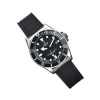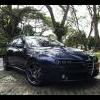Search the Community
Showing results for tags 'actually'.
-
Getting my new ride this Sunday. After reading quite a handful of issues encountered by people driving the same car, I am getting a bit paranoid. Since the implementation of Lemon Law in 2012, just wondering: 1. Has anyone actually invoked it? 2. How did the situation get resolved?
-
Ongoing argument about whether Singaporeans really own their HDB flats, or whether they're just renting them on a lease. One thing that tips the balance in favour of the latter argument is the fact that the HDB has the right to confiscate or repossess your flat if you do something unacceptable in the eyes of HDB, the Big Brother. http://www.asiaone.com/business/what-actually-happens-when-hdb-confiscates-your-flat?xtor=EREC-16-4[Emarsys_Newsletter]-20180102&extid=6934d0cfb7b252f1ae9f0dbddf5ff88ca8637e77
- 153 replies
-
- 1
-

-
I found this interesting read from one of the online article. Share with you guys and see what you all think. Why incompetent people often think they’re actually the best There’s a psychological phenomenon behind it: the Dunning-Kruger effect.Source: https://www.vox.com/science-and-health/2017/11/18/16670576/dunning-kruger-effect-video Maybe you’ve experienced this at school or work before: Dealing with someone who thinks he’s much better at his job than he really is. This can not only be really annoying, but it can lead to disaster as a group project is made much more difficult by someone’s unchecked ego. A new TED-Ed video, based on a lesson by psychologist David Dunning, dives into why this happens and why people are so bad at judging their skills in general, looking into the phenomenon known as the Dunning-Kruger effect. “Knowing how competent we are and how our skills stack up to other people’s is more than a self-esteem boost,” narrator Addison Anderson explained. “It helps us figure out when we can forge ahead on our own decisions and instincts and when we need, instead, to seek out advice.” “But,” Anderson added, “psychological research suggests that we’re not very good at evaluating ourselves accurately. In fact, we frequently overestimate our own abilities.” This is true “to a degree that violates the laws of math.” For example: “When software engineers at two companies were asked to rate their performance, 32 percent of the engineers at one company and 42 percent at the other put themselves in the top 5 percent.” So what’s going on here? There’s actually a reasonable explanation: “When psychologists Dunning and [Justin] Kruger first described the effect in 1999, they argued that people lacking knowledge and skill in particular areas suffer a double curse. First, they make mistakes and reach poor decisions. But second, those same knowledge gaps also prevent them from catching their errors. In other words, poor performers lack the very expertise needed to recognize how badly they’re doing.” For example, how can someone know he’s a bad writer if he doesn’t know even basic spelling and grammar rules? The good news is once people know they are bad at something — say, if they fail at a logic puzzle — they’ll typically admit to it. But some level of experience or expertise is needed for a person to come to that realization. “That may be why people with a moderate amount of experience or expertise often have less confidence in their abilities,” Addison said. “They know enough to know that there’s a lot they don’t know.” But knowledge can also lead to people overestimating others: “Experts tend to be aware of just how knowledgeable they are. But they often make a different mistake: They assume that everyone else is knowledgeable too.” “The result is that people, whether they’re inept or highly skilled, are often caught in a bubble of inaccurate self-perception,” Addison explained. “When they’re unskilled, they can’t see their own faults. When they’re exceptionally competent, they don’t perceive how unusual their abilities are.” There’s a way to prevent all of this: “First, ask for feedback from other people — and consider it, even if it’s hard to hear. Second, and more important, keep learning. The more knowledgeable we become, the less likely we are to have invisible holes in our competence.” Keep in mind this is all just one explanation for why and how incompetent people may overestimate themselves. For examples of other explanations, check out a good rundown by psychologist Tal Yarkoni.
- 38 replies
-
- 11
-

-
- incompetent
- productivity
-
(and 7 more)
Tagged with:
-
http://www.channelnewsasia.com/news/singapore/lawyer-eugene-thuraisingam-fined-s-6-000-for-contempt-of-court-9099504 I wonder if someone will set up a fund to pay for his 6k fine
-
Think before dumping parents in home Those who dump their parents in homes ought to realise that they will eventually meet the same fate, says this writer. my paper By Ronnie Poon In the corporate and business world, it is called succession planning when staff with potential are trained and groomed to provide the next level of support and leadership. They are given all the opportunities, resources and exposure to prepare them for the career path ahead. This is no different from similar preparation in the political arena. At home, the same is also true. Many families, especially Chinese ones, want a son to carry on the family name. The son is favoured not only for his role in maintaining the roots of the ancestral tree, but also his ability to provide, hopefully, an umbrella for his parents in their old age. Parents these days are prepared to have smaller families so that they can give their children the best life can offer. It is not uncommon for some parents to even buy their children a car or a marital home. Call these actions by whatever name you want, but it all boils down to two fundamental reasons: kiasuism and over-pampering. The hope is that their children will take care of them or provide them with a roof over their heads when they are old or sick. However, there are many cases where grown-up children regard looking after parents and parents- in-law as a cost and a liability. The most popular option these days is to send the parents to an old-age home, where they remain for the rest of their days. Usually, the more well-to-do the family is, the more commonly this option is taken. This is because it doesn't come cheap. The reasons (or excuses) are various: Everyone is working, there's no one to take care of them, the house is too small, the children are growing up and there are not enough rooms. Or: Why me, when there are other sons? No wonder nursing homes are doing so well. Families are passing the buck to others just because they can afford to pay. Many residents in old folk's homes have not had a single visitor in weeks, months or even years after their admission. Imagine the loneliness of aged parents as they face four walls, with no one to talk to. Being immobile, it's worse than serving a jail sentence. The reality of life in a nursing homes is eat, sleep and wait for death. Interestingly enough, sending parents away to nursing homes does not contravene the three-generation HDB concept (as the aged still keep the same registered address). Dependants can still pocket an annual government grant given to those who share the same address as their aged parents. Those who dump their parents in homes ought to realise that they will eventually meet the same fate. The day of reckoning will come when their own children follow their footsteps and let them have a taste of their own bitter medicine.
-
Food colouring, not chemicals, was in the indelible ink used in the general election, the Election Commission (EC) admitted today in the Dewan Rakyat. "No chemical was used in the ink but it was instead replaced with permitted food colouring," said Minister in the Prime Minister's Department Datuk Seri Shahidan Kassim in his reply to Segambut Member of Parliament Lim Lip Eng. His statement was in stark contrast with the EC's claim that it used silver nitrate in the ink. He said the absence of the required chemical was the reason the ink was easily washed off. Shahidan also said that the expiry date of the ink was four months from the date it was issued but blamed voters for purposely trying to wash off the ink as the reason why it was not permanent. "How long the ink remains depends on the individual and the efforts put in to wash it off." In a written response, Shahidan also told the Dewan Rakyat that RM6.9 million had been spent on the ink, with an additional RM200,000 spent on transportation, packaging and storage, bringing the total expenditure to RM7.1 million. He added that the EC did not plan to release information related to the suppliers for security reasons. Opposition leader Datuk Seri Anwar Ibrahim had urged voters to lodge police reports on polling day after many of them showed how easily the ink could be washed off their fingers. EC chairman Tan Sri Abdul Aziz Mohd Yusof also announced the formation of a special task force to investigate the reasons why it could be easily washed off. Barisan Nasional won 133 parliamentary seats in the May 5 polls, 21 seats more than the 112 required to form a simple majority government. However, this was BN's smallest win since the country achieved independence in 1957. Pakatan Rakyat continues to refuse to accept the results and point to the fact that it had won 51% of the popular vote compared with BN's 48 %. PR has also filed 39 election petitions to challenge the results in 25 parliamentary and 14 state seats where BN won by small majorities. Despite the protests against the outcome of the polls, the EC insisted that it had carried out the elections in a fair manner, pointing out that the highest ever voter attendance of 84.84% was evidence of confidence in the electoral process. http://sg.news.yahoo.com/indelible-ink-not...-091953150.html
-
http://www.smh.com.au/travel/travel-incide...0110-2ciu0.html So the Samuel L Jackson movie wasn't fictional after all! Crazy stuff, and a big snake too.
-
I am posting this not because I bought a just gotten a Satria Neo. But having test drive other hatch backs like Swift and Jazz, I must say for the price its not a bad car. It handles very well with its stock suspension and good high speed stability. Even at 190KM/H, can feel the car hugging the road and the bumps on the road. There is no "floating" feel. For cornering, it has some understeer but its quite forgiving. Even when the rear does lose grip, it does not snap out suddenly and easily allows me to regain control of the car. Its short wheel base and low height also makes it very agile. Its like a point and shoot car. Of course, the interior isn't anything fantastic (mostly plastic) but since its cheaper than most Jap/Korean makes, I can't exactly complain too much. Overall, I am impressed. This is my first venture in Malaysian cars and I have to say I am impressed.
-
I didn't know this till today and I must say I am surprised. http://www.porsche.com/usa/aboutporsche/po...y/variocamplus/ This is the Variocam plus variable valve lift technology used in Porsche engines. Its actually the same system use by by Proton in their Campro CPS engines and its licensed to Porsche. Of course, they say its actually developed by Lotus...... http://gen2clubbrunei.blogspot.com/2008/12...2-cps-iafm.html Look at the intake cam profile and compare it with Variocam plus. They are essentially the same. Both systems also use flat tappets with a locking pin to change the cams. Of course, the Proton engine does not have continous VVT implemented, only fixed VVT and VVL similar to MIVEC and early VTEC systems. Video of Variocam plus http://www.youtube.com/watch?v=fwWp5TLGMVk Video of Campro CPS http://www.youtube.com/watch?v=Fjn6bdvYdKw
-
in fact, if you guys and gals notice in s'pore or elsewhere, most of the self made big tks are boh tak che or have actually little formal eduacation. they still succeed in their respective busineses. the degree holders, including the first class honors holders end up working for the boh tak che towkays. why? simple because the highly educated ones have been successful in their acedemic lives and do not want/need to take unnecessary risks by doing businesses, thus more secured taking salary from the tks. the self made tks, on the other hand, have the drive, and are forced to work extra hard just to become successful since they do not have the "educational" advantage. majority of the s'pore self-made billionaires are in this boh tak che category, believe it or not.
-
http://www.businesstimes.com.sg/mnt/media/...0/semodel20.jpg Look at the sales for premium cars vs bread and butter cars....... Within the top 10, only b&b cars are Altis and Forte (camry is more luxury). but these 3 add up is even less than BMW 5 series....lol...... So I am wonder who are actually jamming up the roads now.......
-

WTF! I Didn't Know Crude Oil Actually Taste Sweet!
Crazecow posted a topic in General Car Discussion
http://en.wikipedia.org/wiki/Sweet_crude_oil I always wonder what is light sweet crude oil being traded at Nymex.... After some googling, now I know. Low levels of sulphur gives the oil a sweet taste and nice smell...... And people back then actually taste the oil to determine its quality..... All I know about our petrol is that its STINKS LIKE HELL!! I don't think I will ever want to taste it...... -
as above.
-
Just to refresh the list to see who are the members that are still active in skoda forum. Here are those which I think still active. "Active" as in not few months post one time that kind. Feel free to add on if I have left your name out. 1. Lightspeed 2. Taishi 3. Othello 4. Try_conti 5. Echelon 6. Moeykf 7. XLR8 8. Fortress 9. Conned 10.Beanoyip 11.Koolaba 12.King 13.Limlien Seems like thats all the active members folks. Compared to the main list this is kachang puteh man. Wonder where all gone to...
-
Please ignore previous post, the 0 did not appear some how. Also, only those who answered the poll how many kids is ideal for a family should answer so as to have a more accurate result. Why this poll? well there is ideal and there is reality.
-
jus realise that the red dots on my ride was actually red dye from the plane that flew through my area..... intially still tot that was some red ink that got on my ride. This morning came to know from newspaper that it was red dye that drop from airplane....siao liao any bro/sis encounter this in cck...tech whye areas etc
-
Recession in US economy? Caroline Baum Thu, Nov 29, 2007 The Straits Times EVERYWHERE you turn in the US today, recession is staring you in the face. The Sunday New York Times featured a story on the prospects for recession. The following day, the Wall Street Journal ran a recession article on page one. Newspapers in Europe and Asia are commenting on comments on a US recession. Economists are scurrying to pencil in another reduction in the US Federal Reserve's benchmark rate on Dec 11 and to pare their expected target for next year, comments by policymakers notwithstanding. Recently, Fed Governor Randall Kroszner was surprisingly blunt when he told a conference that 'the current stance of monetary policy should help the economy get through the rough patch during the next year'. Data consistent with the slow growth he foresees won't suggest monetary policy is 'inappropriate,' he said. The message was about as clear as it gets when it comes to central bankers: No rate cut in December. Unfortunately, the market's outlook isn't aligned with the US Fed's forecast. The Fed funds futures market is placing the odds of a 25-basis-point cut on Dec 11 at 98 per cent. Economists had initially put their faith in the Fed's words. But now they're siding with the market's action. So is all this recession talk overblown, a good story to explain teetering world stock markets? What hard evidence is there that the United States economy is rolling over? 'The thing that makes it most compelling is that the consensus of economists is still looking for growth,' says Mr Paul Kasriel, director of economic research at Northern Trust in Chicago. For those putting their faith in markets, one glance at the US Treasury yield curve tells you something is amiss. The yield on every issue, from bill out to bond, is below the Fed's target rate. It makes it harder for banks to turn a profit, which is one of the reasons US financial stocks have been the biggest losers this year. The spread between the funds rate and 10-year Treasury yield, which is one of 10 components in the Index of Leading Economic Indicators (LEI), has been inverted since July last year on a monthly average basis. Given that the US economy was still expanding in the third quarter, the spread's lead time looks to be long. All the talk about why long rates have been low - US-dollar-related buying by the People's Bank of China, the global savings glut and now a panicked flight to quality - is beside the point. The message of the yield curve is that the Fed is keeping the overnight rate too high relative to market-determined long-term rates. There are other troublesome signals emanating from the market. The spread between high- yield bonds and gilt-edged government securities has more than doubled since June to about 500 basis points. 'Credit spreads are usually a coincident to lagging indicator,' Mr Kasriel says. 'The fact that they've widened may suggest we're already in recession'. Three-month interbank lending rates are rising, and central banks in both the US and Europe are acting to ease anticipated year-end funding pressures. The Fed announced earlier this week that it plans to conduct 'term repurchase agreements', which are collateralised loans to primary dealers, that will extend into the new year. Ever since credit concerns arose in August, the effective Fed funds rate has been wide of the Fed's target. What else is sending a worrying sign? The LEI has been going sideways for an unprecedented two years. That suggests the US economy doesn't have 'significant upward momentum going forward', said economist Ataman Ozyildirim of the Conference Board's business cycle indicators group. 'It highlights the risk in the economy.' It is not, in his view, sending a recession signal. Of the two measures whose readings presage a slump - the six-month annualised change in the LEI and the six-month diffusion index - only one is in danger territory. The six-month diffusion index was at the threshold of 50 in September and October, indicating that half of the 10 components were rising in the last half-year. That index stood at 40 for the entire first half of 2007, seemingly without any untoward effects. The six-month change in the LEI has been hovering near zero for a year and a half, well shy of the 4 per cent to 4.5 per cent fall Mr Ozyildirim says meets the threshold for a recession signal. The recent trend in the LEI is not encouraging: The index posted steep declines in two of the last three months. Falling home prices, rising default rates, sagging consumer confidence and tighter lending standards may prove to be the proverbial straw that broke the economy's back. 'Banks are buying old credit, not making new loans,' Mr Kasriel points out. 'You could say there's a re-intermediation going on. Banks are buying the assets no one wants.' That's not the making of a healthy economy. The writer is a Bloomberg News columnist. The opinions expressed are her own. Copyright: Bloomberg News -------------------------------------------------------------------------------- IT'S ARRIVED 'Credit spreads are usually a coincident to lagging indicator. The fact that they've widened may suggest we're already in recession.' WORRYING SIGN 'Banks are buying old credit, not making new loans. You could say there's a re-intermediation going on. Banks are buying the assets no one wants.' MR PAUL KASRIEL, director of economic research at Northern Trust
-
With the 2% increase in GST looming on the horizon, how much is the increase going to affect car prices? Here's the official guide from LTA. Don't let the dealers and agents prey on your ignorance! gstguideformotortraders.pdf
-
I got some braided brake hose for my ride. My car manual states brake fluid as approx. 0.4L. How much brake fluid should I buy and bring to workshop who will replace the hoses for me? Do I bring a 500ml bottle or will they need more taking bleeding etc into consideration? Any advise is appreciated. Thanks
-
Good morning, Brothers I'm sure that in the course of our car ownership, fuel additives are definitely one of the most marketed products at the service workshops. Question is, are the chemicals as efficacious as what the manufacturers claim them to be? An episode of 'MythBusters' screened on Discovery channel yesterday compared the various genres of fuel additives, ranging from the straightforward fuel 'adhesives' and 'start-up magnets' to complicated 'hydrogen combustion engines'. And guess what? The wide variety of fuel enhancement products achieve merely identical or for some, lower fuel economy as compared to the native fuel. So, Brothers, any experience with the fuel additives? Opinions as far as I gather seem to be divided between the good and the bad. Thank you and have a great day ahead
-
The new Volkswagen long-wheel based Passat looks to uncanningly like a Superb with an Audi A4-looking behind? But anyways by right the Superb is based of the original Passat, are they a long running production line, especially that now that Volkswagen in China is picking up production of Skodas in China, parts wise and Chasis wise a very smart move, keeps inventory down. The interior is just tooooooo Superb don't you think? Dose this mean that all our Superbs has a potential to add on this Passat body kit? Anyways here are some pics from the web for your enjoyment and amusement.
- 9 replies
-
- Volkswagen
- Long
- (and 6 more)
-
Anti-roll Bars The primary function of anti-roll bars is to reduce body roll by adding to the roll resistance of the springs. An anti-roll bar, also referred to as a stabilizer or sway bar, is a bar or tube which connects some part of the left and right sides of the suspension system. On independent suspension systems, the connection point is usually the lower control arm. Most cars have a front anti-roll bar, and most sports cars are going to have both a front and rear bar. After market bars are going to be stiffer than the stock ones. Roll Resistance Anti-roll bars are used to reduce body roll during cornering. They add to the roll resistance of the suspension springs for a higher overall roll resistance Because the primary purpose of the spring is to maintain maximum contact with the road surface over imperfections, we must settle for the roll resistance provided, and it is rarely enough. The anti-roll bar adds to the roll resistance without resorting to an overly stiff spring. A properly selected anti-roll bar will reduce body roll in corners for improved cornering traction, but will not increase the harshness of the ride, or reduce the effectiveness of the tire to maintain good road surface contact. So, how does limiting body roll improve handling? The suspension system geometry (the lengths and connecting points of its parts) of a street car is designed to keep the bottom of the tire parallel with the road for maximum contact patch. At rest, the car's suspension has a particular geometric relationship to the road surface. Body roll changes that relationship, and reduces the suspension's ability to keep the tire parallel to the road. During body roll, the car body is no longer parallel with the road, and neither is the suspension geometry. Even though the suspension allows the wheel to be somewhat independent from the body, the high cornering forces, and resulting large body roll of a factory car, on the track take the suspension close to its limits where it affects the angle of the wheel. Large amounts of body roll cause the wheels to tilt away from the corner which lifts the edges of the tire and reduces the contact patch size. While this can be compensated for by having the wheel purposely tilted inward to start (adding negative camber), there is a practical limit to this which is not enough in most cars to compensate entirely for the body roll. The anti-roll bar reduces the amount of body roll, and therefore helps to maintain as much of the contact patch as possible. As with all good things, more is better only to a point. Because the anti-roll bar connects the left and right sides, this reduces the independence of independent suspension. Too stiff a bar, and you can cause too much loss in the ability of the left or the right wheel to independently respond to road surface imperfections. The purpose of suspension is to maintain maximum tire contact with the road. The purpose of independent suspension is to allow the left and right wheels to each seek that contact separately. The left wheel may need to be going down when the right needs to be going up. If they were tied together as with the old floating rear axles, one or both of the wheels is not achieving maximum contact. In fact, too stiff an anti-roll bar can actually cause an inside wheel to lift completely off the ground during hard cornering. When cornering, the bar will twist with the outside end being pushed down, and the inside end being lifted (just like the body of the car). On the outside tire, this downward pressure helps increase tire traction. However, on the inside tire, the anti-roll bar is pushing up on the suspension reducing the downward force the spring is trying to place to keep the tire on road. If the anti-roll bar is too stiff, it will overpower the spring, prevent it from extending enough to keep the tire on the road, and the wheel will actually lift off the ground. This is not an optimum situation, but it is common in several racing classes. The cause is not so much poor engineering, but the limitations of the class rules that allow the engineer to compensate for it. Roll Coupling The anti-roll bar is also used to tune the roll coupling of the chassis. Roll coupling is the relationship of the roll resistance of the front of the car and the roll resistance of the rear. The balance of the roll coupling, because of its effect on traction, has influence on whether the car has a tendency to understeer or oversteer. While this can be caused by several factors, the anti-roll bar (especially, an adjustable one), can be used to compensate. As we mentioned, the anti-roll bar helps increase the mechanical downforce of the outside tire during cornering. This increases the traction of that tire, and that end of the car (front or rear). An increase in traction at that end, may leave the opposite end with too little traction. An imbalance of traction occurs, and one end of the car will lose traction before the other end. If the front tires lose traction before the rear tires, the car will understeer. If the rear tires lose traction before the front tires, the car will oversteer. Changing the anti-roll bar stiffness can adjust this out. Summary The anti-roll bar reduces body roll to keep the suspension geometry, and ultimately the tire, parallel with the road. Stiffer bars reduce body roll more, but too stiff a bar can deteriorate independent suspension performance, and ultimately cause an inside tire to lift off the ground during hard cornering. The anti-roll bar can also be a major tuning element in reducing excessive understeer or oversteer. Used incorrectly it can also cause it. Like other parts you can buy for the car, the "killer" biggest, stiffest anti-roll bar you can buy is rarely going to be the appropriate choice. Look for someone experienced with your car, and can take into account the shocks and springs already installed in your car.

















